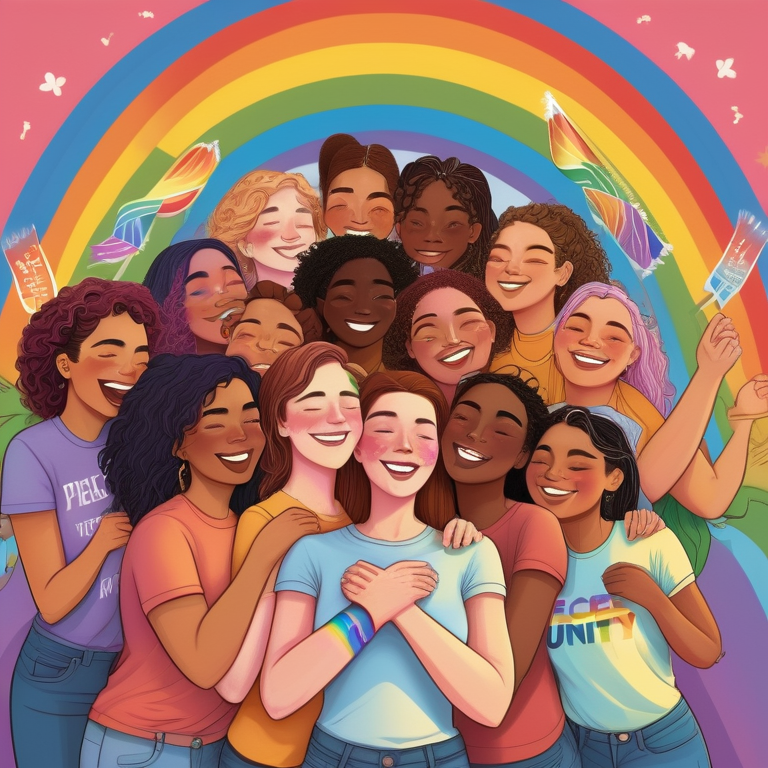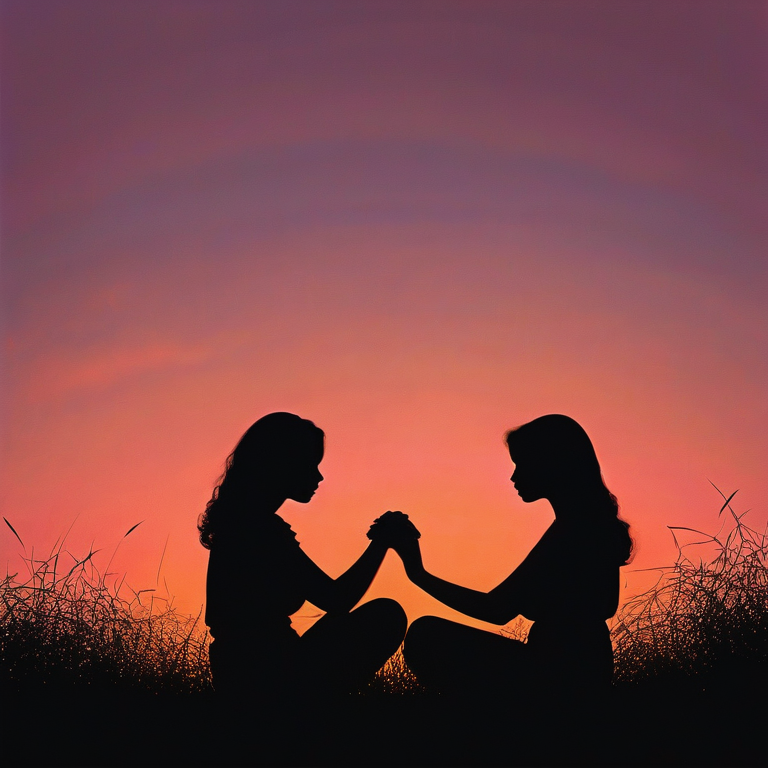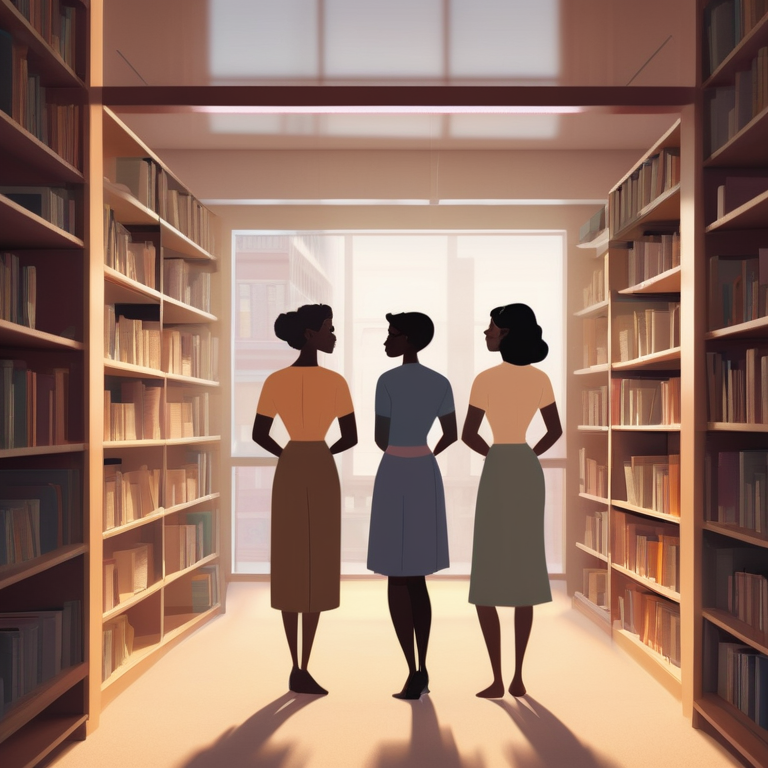Exploring Intersectionality in LGBTQ+ Women’s Sexuality

Key Highlights
- Intersectionality plays a role in understanding the of LGBTQ+ women- LGBTQ+ women’s sexuality is diverse and encompasses various sexual orientations and gender identities.
- Marginalization discrimination are significant challenges faced by LGBTQ+ women.
- Cultural considerations and societal norms impact LGBTQ+ women’s sexual experiences.
- Intersectional feminism plays a vital role in advocating for LGBTQ+ women.
- Personal stories and organizations led by LGBTQ+ women contribute to empowerment and change.
Introduction
Exploring Intersectionality in LGBTQ+ Women’s Sexuality
The intersectionality of identities is an essential aspect of understanding the diverse experiences within the LGBTQ+ community. Intersectionality recognizes that individuals hold multiple identities simultaneously, such as race, gender, sexuality, and more, which intersect and shape their experiences. In the context of LGBTQ+ women’s sexuality, intersectionality plays a crucial role in understanding the unique challenges and experiences they face.
LGBTQ+ women encompass a wide spectrum of sexual orientations, including lesbian, bisexual, queer, and more, as well as various gender identities, such as cisgender, transgender, and non-binary. These intersections create a complex tapestry of experiences that shape their sexuality and interactions with society.
This blog will delve into the significance of intersectionality in LGBTQ+ women’s sexuality, exploring the origins and principles of intersectionality, the role it plays in LGBTQ+ women’s lives, the diversity of sexual orientations among LGBTQ+ women, the intersectional challenges they face, the impact of gender identity, cultural considerations, the role of intersectional feminism, and stories of empowerment. By understanding the intersectionality of LGBTQ+ women’s sexuality, we can foster inclusivity, advocate for their rights, and celebrate their diverse experiences.
Understanding Intersectionality in the Context of LGBTQ+ Women’s Sexuality
Intersectionality is a term coined by scholar Kimberlé Crenshaw, referring to the interconnected nature of social categorizations, such as race, gender, and sexuality, and how they overlap and intersect to create unique experiences. In the context of LGBTQ+ women’s sexuality, intersectionality acknowledges that their identities as women, members of the LGBTQ+ community, and individuals with various racial, cultural, or religious backgrounds shape their experiences. It recognizes that LGBTQ+ women do not exist in isolation but navigate a complex web of intersecting identities that influence their sexuality and interactions with society.
The Origins and Principles of Intersectionality
Intersectionality emerged as a theoretical framework in the late 1980s as a response to the limitations of single-axis theories that failed to capture the complexities of identity and oppression. Developed by Kimberlé Crenshaw, intersectionality acknowledges that individuals hold multiple identities simultaneously and that these identities intersect to shape their experiences. It recognizes that categories such as gender, race, sexuality, and class cannot be analyzed in isolation but must be understood in relation to one another.
The principles of intersectionality include the recognition of interlocking systems of power and oppression, the importance of centering marginalized voices, and the understanding that individuals experience privilege and oppression simultaneously. By applying an intersectional lens, we can better understand the unique experiences and challenges faced by LGBTQ+ women in relation to their sexuality.
Intersectionality’s Role in LGBTQ+ Women’s Lives
Intersectionality plays a significant role in the lives of LGBTQ+ women, as it recognizes the diverse range of identities they hold and the ways in which these identities intersect and influence their experiences. For lesbian women, intersectionality acknowledges the interactions between their sexual orientation, gender, and other intersecting identities such as race, ethnicity, and ability. Similarly, bisexual women navigate the complexities of both heterosexuality and queerness, often facing unique challenges and stereotypes.
Transgender women, too, experience intersectionality in their lives, as they navigate the intersections of gender identity, sexual orientation, and societal expectations. Intersectionality enables us to understand the diverse experiences of LGBTQ+ women and the ways in which the intersections of their identities shape their sexuality, relationships, and interactions with society.
The Spectrum of LGBTQ+ Women’s Sexuality
LGBTQ+ women’s sexuality encompasses a broad spectrum of sexual orientations and romantic attractions. Sexual attraction refers to an individual’s desire for physical intimacy with others, while romantic attraction refers to emotional connections and desires for romantic relationships. It is important to recognize that sexual and romantic orientations exist on a continuum rather than as fixed categories. This spectrum allows for a more inclusive understanding of LGBTQ+ women’s diverse experiences and affirms the validity of their sexual and romantic attractions.
Defining Sexuality Within LGBTQ+ Communities
Within LGBTQ+ communities, sexual orientation refers to an individual’s enduring pattern of sexual and romantic attractions towards members of the same and/or different genders. Lesbian women have a sexual orientation towards women, while gay men have a sexual orientation towards men. Bisexual women have the capacity for sexual and romantic attractions towards both women and men. Queer is an umbrella term that encompasses a range of sexual orientations and gender identities outside of heterosexuality and cisgender identities, including ace individuals who may identify as demisexual, grey-sexual, or asexual. Ace people who experience romantic or occasional sexual attraction may also use terms such as gay, bi, lesbian, straight, and queer in conjunction with asexual to describe the direction of their attraction.
It is important to recognize that sexual orientation is not solely determined by behavior but is an inherent aspect of a person’s identity. By understanding the diverse range of sexual orientations within LGBTQ+ communities, we can foster inclusivity and support individuals in embracing their authentic selves.
The Diversity of Sexual Orientations Among LGBTQ+ Women
LGBTQ+ women encompass a diverse range of sexual orientations that go beyond the binary of lesbian and bisexual. Lesbian women are women who have a primary sexual and romantic attraction to other women. Bisexual women experience sexual and romantic attractions towards both women and men. It is important to note that bisexuality is not a binary attraction, but rather a spectrum that recognizes the capacity for attractions to multiple genders. Transgender women also have a range of sexual orientations, with some attracted to women, some to men, and others attracted to individuals of various gender identities.
By acknowledging the diversity of sexual orientations among LGBTQ+ women, we can challenge stereotypes, promote inclusivity, and ensure that individuals feel seen and validated in their identities.
Intersectional Challenges Faced by LGBTQ+ Women
The intersectionality of LGBTQ+ women’s identities exposes them to unique challenges and forms of discrimination. Marginalization and societal norms contribute to the higher risk of discrimination and violence faced by LGBTQ+ women, particularly those who belong to other marginalized communities such as women of color or transgender women. These challenges can manifest in various areas of their lives, including healthcare, employment, housing, and relationships. Understanding and addressing these intersectional challenges is crucial for creating a more inclusive and equitable society for LGBTQ+ women.
Marginalization and Its Impact on LGBTQ+ Women of Color
Marginalization affects LGBTQ+ women of color in unique ways, as they navigate the intersections of race, gender, and sexuality. Women of color face compounded forms of discrimination and exclusion due to their racial identity and their LGBTQ+ status. This intersectionality often leads to increased vulnerability to violence, limited access to resources, and higher rates of mental health issues. It is essential to recognize and challenge the intersecting systems of oppression that marginalize LGBTQ+ women of color and work towards creating inclusive spaces that uplift and empower their voices.
Societal Stigma and Discrimination: Realities for LGBTQ+ Women
LGBTQ+ women, regardless of their specific identities, often face societal stigma and discrimination due to their non-conformity to heteronormative and cisnormative expectations. This stigma can manifest in various forms, ranging from subtle microaggressions to overt acts of violence and exclusion. Transgender women, in particular, face high levels of discrimination and violence due to the intersection of their gender identity and their sexual orientation. Cisgender women who deviate from traditional feminine norms may also experience societal backlash, especially during their high school years. By understanding the realities of societal stigma and discrimination, we can work towards creating more inclusive and accepting environments for LGBTQ+ women in high school and beyond.
Gender Identity Among LGBTQ+ Women
Gender identity is a significant aspect of LGBTQ+ women’s sexuality. Gender identity refers to a person’s deeply held sense of being male, female, or something else, which may or may not align with the sex they were assigned at birth. LGBTQ+ women encompass a range of gender identities, including transgender women, who identify as women despite being assigned male at birth, cisgender women, who identify with the gender they were assigned at birth, and non-binary individuals, who do not exclusively identify as male or female. Understanding the diverse gender identities among LGBTQ+ women, including transgender people, is crucial in exploring the intersectionality of their sexuality.
Exploring the Relationship Between Gender Identity and Sexuality
The relationship between gender identity and sexuality is complex and varies among LGBTQ+ women. For transgender women, their gender identity as women influences their experiences of sexual orientation. Transgender women may identify as lesbian if they are attracted to other women, or they may identify with other sexual orientations that align with their gender identity.
Similarly, cisgender lesbian women are attracted to other women, while cisgender bisexual women may experience attraction to both women and men. Non-binary individuals may identify with a range of sexual orientations, depending on their own gender identity and the genders of those to whom they are attracted.
Understanding the relationship between gender identity and sexuality is essential in fostering inclusivity and recognizing the diverse experiences of LGBTQ+ women.
Trans Women and Intersectionality: Navigating Multiple Identities
Transgender women face unique challenges as they navigate multiple intersecting identities. Their experiences encompass the intersection of gender identity, sexual orientation, and societal expectations. Transgender women may face discrimination and stigma not only for their gender identity but also for their sexual orientation. Intersectionality recognizes the complexity of these identities and the ways in which they shape transgender women’s experiences of sexuality.
Transgender women may experience marginalization, limited access to healthcare, and higher rates of violence due to societal misconceptions and prejudice. Understanding and addressing the intersectional challenges faced by transgender women is crucial for creating a more inclusive and affirming society for all LGBTQ+ women.
Cultural Considerations in LGBTQ+ Women’s Sexuality
Cultural considerations play a significant role in shaping LGBTQ+ women’s sexuality. Cultural norms, values, and beliefs influence how individuals perceive and express their sexual orientation and gender identity. Different cultures have varying levels of acceptance and recognition of LGBTQ+ identities, which can impact the experiences of LGBTQ+ women both within and outside their communities. Understanding and respecting cultural diversity is essential in fostering inclusivity and creating safe spaces for LGBTQ+ women to express and celebrate their authentic selves.
The Influence of Culture on Understanding and Expressing Sexuality
Culture plays a significant role in shaping how LGBTQ+ women understand and express their sexuality. Different cultural contexts provide varying levels of acceptance, recognition, and support for LGBTQ+ identities. In some cultures, traditional beliefs and social norms may stigmatize non-heteronormative and non-cisnormative expressions of sexuality, leading to increased secrecy and limited visibility for LGBTQ+ women. However, these cultural expectations and norms also impact the expression of masculinity, as men are often expected to uphold a certain level of masculinity and heterosexuality in order to maintain power. As Morgan and Massey suggest, this can create a fragile concept of masculinity that may limit the expression of same-sex interest.
However, cultures also offer opportunities for LGBTQ+ women to celebrate and express their identities. Cultural pride events, LGBTQ+ organizations, and community support networks provide spaces for LGBTQ+ women to connect, find validation, and express their authentic selves. By embracing diverse cultural expressions of LGBTQ+ women’s sexuality, including online communities on platforms like Facebook, we can foster inclusivity and promote the affirmation of all identities.
Celebrating Diverse Cultural Expressions of LGBTQ+ Women
LGBTQ+ women contribute to a vibrant tapestry of diverse cultural expressions. Their identities, experiences, and activism transcend borders, cultures, and communities, enriching the LGBTQ+ movement globally. From Pride parades to art, literature, and music, LGBTQ+ women play an integral role in showcasing and celebrating their cultural heritage. Cultural diversity within LGBTQ+ communities fosters a sense of belonging, pride, and empowerment, ensuring that no identity is erased or silenced. By acknowledging and uplifting diverse cultural expressions, we create spaces that value all LGBTQ+ women and their contributions to society.
Intersectional Feminism and LGBTQ+ Women
Intersectional feminism recognizes the interconnections between different forms of oppression and advocates for the rights and empowerment of all individuals, including LGBTQ+ women. It acknowledges that feminism must address the unique challenges and experiences faced by LGBTQ+ women, particularly those from marginalized communities. Intersectional feminism aims to create inclusive spaces for all women, regardless of their sexual orientation, gender identity, race, ethnicity, or socioeconomic background. By centering the experiences of LGBTQ+ women in feminist activism, we can work towards a more equitable and just society for everyone.
The Role of Intersectional Feminism in Advocating for LGBTQ+ Women
Intersectional feminism plays a crucial role in advocating for the rights and well-being of LGBTQ+ women. By recognizing the intersections of gender, sexuality, race, and other identities, intersectional feminism aims to address the unique challenges and experiences faced by LGBTQ+ women. It emphasizes the importance of centering marginalized voices and dismantling systems of oppression that perpetuate discrimination and inequality.
Intersectional feminism promotes inclusivity, acceptance, and understanding within feminist movements. It advocates for policies and practices that recognize the diverse experiences of LGBTQ+ women, ensures their access to healthcare, education, and employment opportunities, and works towards the eradication of discrimination and violence. By embracing intersectional feminism, we can create a more inclusive and equitable society for all LGBTQ+ women.
Achievements and Challenges in the Intersectional Feminist Movement
The intersectional feminist movement has achieved significant milestones in advocating for the rights and empowerment of LGBTQ+ women. It has contributed to legislative advancements, increased visibility, and improved societal acceptance of LGBTQ+ individuals. Intersectional feminism has also fostered the creation of safer spaces, support networks, and resources for LGBTQ+ women.
However, challenges remain in the fight for equality. LGBTQ+ women continue to face discrimination, violence, and limited access to essential resources. Intersectional feminist activism must continue to address these challenges by challenging systemic norms, advocating for policy changes, and amplifying the voices of LGBTQ+ women. By standing in solidarity and continuing the fight for justice, intersectional feminism can make a lasting impact in the lives of LGBTQ+ women.
Stories of Empowerment: LGBTQ+ Women Making a Difference
LGBTQ+ women have played a vital role in driving social change, advocating for LGBTQ+ rights, and empowering their communities. Through personal stories and experiences, LGBTQ+ women inspire others, challenge stereotypes, and pave the way for greater acceptance and equality. Their narratives highlight the resilience, strength, and diversity within the LGBTQ+ community. By sharing their stories, LGBTQ+ women contribute to a more inclusive and compassionate society, fostering understanding and empathy for all identities.
Highlighting Voices: Personal Stories of LGBTQ+ Women
Personal stories hold immense power in creating empathy and understanding. LGBTQ+ women’s personal narratives provide insight into their unique experiences, challenges, and triumphs. By sharing their stories, LGBTQ+ women bravely challenge stereotypes, break down barriers, and inspire others within and outside the LGBTQ+ community. These personal stories highlight the intersectionality of LGBTQ+ women’s identities, shedding light on the diverse range of experiences they navigate. Listening to and uplifting these voices is crucial in creating a more inclusive and equitable society that celebrates the resilience and strength of LGBTQ+ women.
Organizations and Movements Led by LGBTQ+ Women
LGBTQ+ women have been at the forefront of many organizations and movements advocating for LGBTQ+ rights. From grassroots initiatives to international organizations, LGBTQ+ women have dedicated their time and energy to creating change and fostering inclusivity. These organizations, including the Gay Activists Alliance (GAA) founded after the Stonewall uprisings, provide vital resources, support networks, and platforms for LGBTQ+ women, including trans people, to connect, share experiences, and advocate for their rights. Movements led by LGBTQ+ women, such as Sylvia Rivera’s campaign with the GAA, have played a significant role in challenging societal norms, demanding policy changes, and promoting greater acceptance. By acknowledging and supporting these organizations and movements, we can contribute to the empowerment and well-being of LGBTQ+ women, including trans people.
Conclusion
In exploring intersectionality in LGBTQ+ women’s sexuality, it’s vital to understand the multifaceted challenges and nuances they face. This inclusive approach acknowledges the diverse cultural influences, gender identities, and societal stigmas that shape their experiences. By celebrating their diverse expressions and advocating for their rights through intersectional feminism, we empower LGBTQ+ women to navigate their identities with pride. Through amplifying their voices, sharing personal stories, and supporting LGBTQ+ women-led organizations, we can contribute to a more inclusive and supportive community. Let’s continue to uplift and validate the sexual identities of LGBTQ+ women by embracing intersectionality and promoting allyship. Share this important conversation on social media to raise awareness and foster a more inclusive society.
Frequently Asked Questions
How Does Intersectionality Affect LGBTQ+ Women’s Experiences?
Intersectionality recognizes the multiple identities LGBTQ+ women hold and how they intersect to shape their experiences of sexuality, discrimination, and marginalization. It acknowledges that LGBTQ+ women’s experiences cannot be understood in isolation and require an intersectional framework.
What Are Some Common Misconceptions About LGBTQ+ Women’s Sexuality?
Common misconceptions about LGBTQ+ women’s sexuality include assuming that their sexual orientation is a phase, erasing their identities by questioning their authenticity, and perpetuating harmful stereotypes based on gender and sexuality.
How Can Allies Support LGBTQ+ Women Effectively?
Allies can support LGBTQ+ women by actively educating themselves about LGBTQ+ issues, listening to and validating their experiences, advocating for their rights, and creating inclusive and safe spaces for them to express their authentic selves.
How can societal norms and stereotypes impact the sexual experiences of LGBTQ+ women?
Societal norms and stereotypes can impact the sexual experiences of LGBTQ+ women by creating feelings of discomfort, shame, and a lack of validation. These norms can also contribute to the erasure and invisibility of their identities.
What are some common challenges faced by LGBTQ+ women in exploring their sexuality?
Common challenges faced by LGBTQ+ women in exploring their sexuality include societal stigma and discrimination, limited representation and visibility, difficulties in finding affirming spaces, and the intersectionality of their identities.
How can individuals support and uplift the sexual identities of LGBTQ+ women?
Individuals can support and uplift the sexual identities of LGBTQ+ women by practicing inclusivity, actively listening to their experiences, challenging stereotypes, advocating for their rights, and creating safe and affirming spaces.





